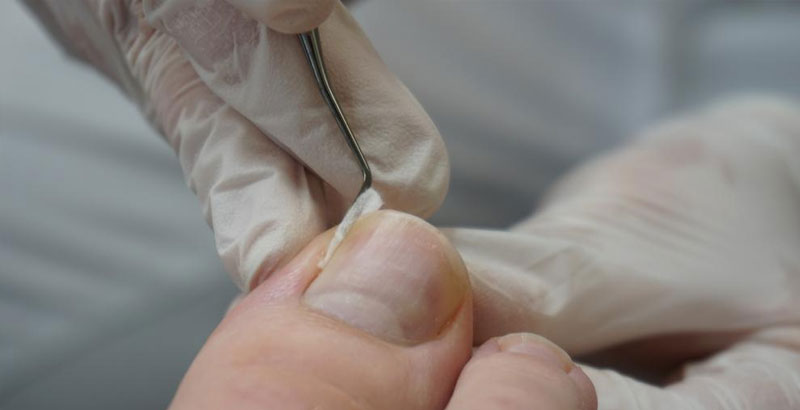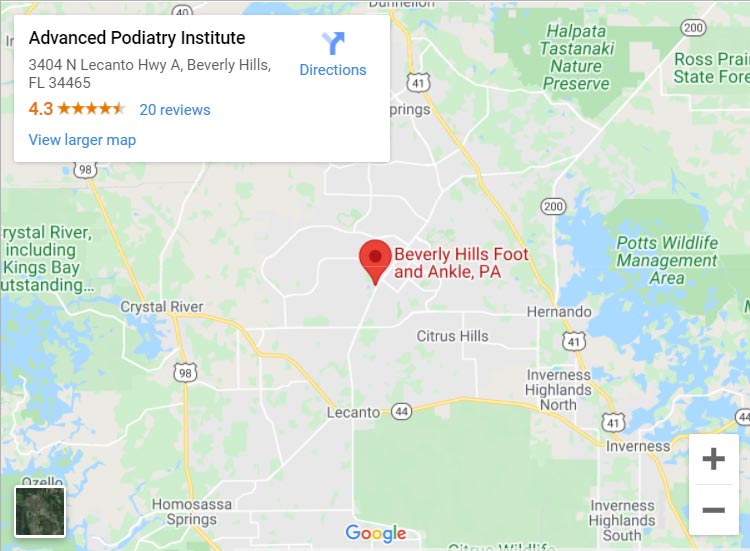The “Ow” in Ingrown Toenails!
Ingrown toenails are a common and uncomfortable foot condition that cause a lot of pain and discomfort. There are many reasons for ingrown toenail occurrence and some of those causes can be eliminated with education and hygiene.
What are ways to prevent an ingrown toenail?
The most frequent causes of ingrown toenails are improper toenail clipping and tight shoe wear. Both of which can be easily remedied.
Toenail clipping
Many people are unaware that there is a certain technique involved when it comes to clipping toenails. Toenails should never be longer than the tips of your toes, but do not cut them too short as to reveal the soft pink tissue underneath. This skin tissue is easily inflamed, causing pain.
When attempting to cut toenails, make sure to use proper toenail clippers. A normal nail cutter has slightly curved cutting edges while a toenail cutter has edges that are straight across in order to reduce the likelihood of ingrown toenails. Observe the natural line of your toenails and when grooming toenails make sure to trim them straight across. Do not round off or cut the corners of your nails or pry the corners when cutting.
Shoe wear
Proper-fitting shoes are essential for good foot health. Small, tight shoes not only compress the toes and toenails, they do not allow your feet to breathe, lead to foot discomfort and may even affect the biomechanics of your walking. When shoe shopping, do it in the late afternoon or evening because you feet are at their largest size. In addition, make sure your foot size is measured every time before purchasing shoes to ensure an appropriate fit.
How do you determine if a shoe is too tight? Do yourself a favor. On a piece of paper, draw the outline of your foot. Then, find a pair of shoes, remove the insole and place it over of the outline of your foot. Does the insole accommodate your foot properly? If it does, you should not be able to see much of the outline of your foot around the insole. If you can see most of your foot, then those shoes are tight.
What are treatments for an ingrown toenail?
There are a variety of non-invasive and invasive (surgical) treatments for an ingrown toenail.
- Soak your foot in warm water
- Place a piece of cotton in the affected corner
- Wear comfortable shoes with a sufficient room for your toes
- Consider wearing open-toed shoes to prevent shoe material from touching the affected area
- Take aspirin or ibuprofen for pain relief
As soon as you detect an ingrown toenail make an appointment with your podiatrist! An ingrown toenail may be complicated by an infection caused by the nail breaking into the skin, so it is best to leave your problem in their hands. In the case of an infection, your doctor may prescribe oral antibiotics. If you have diabetes or poor circulation, seek a medical professional for treatment of your ingrown toenail!
Surgical intervention may be necessary to remove the offending part of the nail and prevent infection. A partial or complete nail avulsion is a procedure where the doctor injects anesthetic in your toe and then instruments are used to cut away the ingrown toenail portion without disturbing the nail bed. If you follow your podiatrist’s recommendations, you will minimize your discomfort and hopefully prevent the recurrence of the problem!



